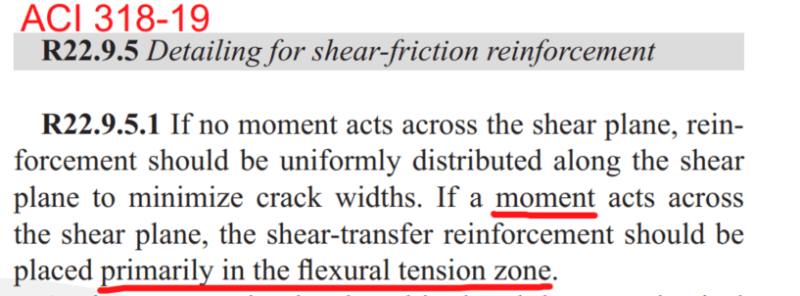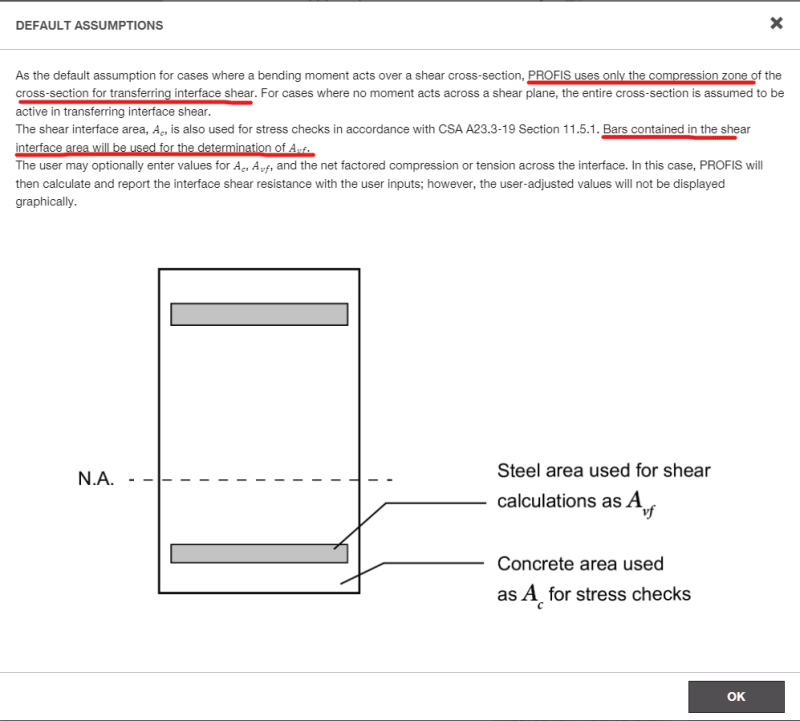Good afternoon!
I've been looking through one of Hilti's guides (Post-Installed Reinforcing Bar Guide) and have found that they are using the bars in the compression zone as shear friction reinforcement.
It is my understanding that when a moment acts across a joint, the bars that are in tension are used as shear friction reinforcement.

I have attached a worked example from Hilti showing the bars in the compression zone being used as shear friction reinforcement, which in my opinion is wrong.
Additionally, on Hilti's Profis software package they have an explanation of their "default assumptions" for shear friction which show that they only count on bars in the compression zone for shear-transfer when moment acts across a joint.

I have a hard time believing Hilti would be wrong on this, but at the same time feel I am correct.
Am I misunderstanding shear friction or did Hilti make a mistake?
Thanks for the replies and apologies for the long post.
I've been looking through one of Hilti's guides (Post-Installed Reinforcing Bar Guide) and have found that they are using the bars in the compression zone as shear friction reinforcement.
It is my understanding that when a moment acts across a joint, the bars that are in tension are used as shear friction reinforcement.

I have attached a worked example from Hilti showing the bars in the compression zone being used as shear friction reinforcement, which in my opinion is wrong.
Additionally, on Hilti's Profis software package they have an explanation of their "default assumptions" for shear friction which show that they only count on bars in the compression zone for shear-transfer when moment acts across a joint.

I have a hard time believing Hilti would be wrong on this, but at the same time feel I am correct.
Am I misunderstanding shear friction or did Hilti make a mistake?
Thanks for the replies and apologies for the long post.
